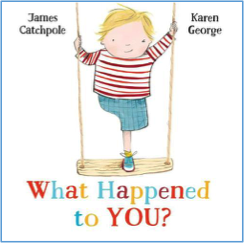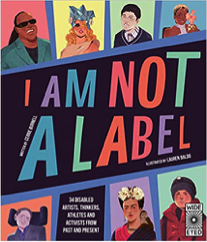I am passionate about accessible books for students with disabilities. As a teacher, special educational needs coordinator (SENCO) and vice-principal of an academy, I want to ensure that books are accessible to all children so they develop a love of reading. Books have always played an important part in my life. Working in schools where children live in the most deprived communities has shown me the inequality and unfairness within the education system. Children with special educational needs and disabilities (SEND) often leave primary education with poor reading skills.
I am a huge advocate for inclusion and, as a SENCO, I realise that reading can become an incredibly frustrating task for children with additional needs and learning disabilities. Educational practitioners must remove barriers to reading and make reasonable adjustments so that all children can enjoy books and access the wider curriculum.
It is vital that SEND children see themselves reflected positively in literature from a very young age. Such representation promotes social inclusion and enables these young people to develop pride in who they are and receive affirmation that they are valued individuals in society.
Recently there has been an increase in the publication of books that feature characters with neurological variances and differences such as autism, dyspraxia, dyslexia and ADHD. These books provide all children with the opportunity to learn about life from a neurodiverse character’s point of view, how their experiences differ and the challenges they face.
Here are some book recommendations for the classroom that aim to educate, raise awareness and provide positive reflections of characters with SEND.
Accessible books for students with disabilities choice 1: A Kind of Spark by Elle McNicoll
A remarkable middle-grade novel about an 11-year-old neurodivergent protagonist, Addie, who embarks on a journey of self-awareness and acceptance to understand what it means to be autistic with the support of her sister Keedie. This incredibly emotional novel helps children, autistic readers and teachers discover more about themselves and their communities and what can be done to raise awareness of neurodiversity.

Accessible books for students with disabilities choice 2: What Happened To You? by James Catchpole and Karen George
A wonderful children’s picture book featuring Joe, a young boy with one leg, who attempts to answer the question “What happened to you?” asked by the children playing around him. This book celebrates children’s curiosity and focuses on identifying similarities and accepting differences.
James Catchpole discusses his personal experience of disability as a child in a Q&A session here.

Accessible books for students with disabilities choice 3: I Am Not a Label by Cerrie Burnell
This informative and inspirational anthology explores the experiences of a diverse range of pioneering individuals who have overcome obstacles and shattered glass ceilings to become innovators and role models for society. When I read this book, I was impressed by how these remarkable people have challenged preconceptions about disabilities and mental health.

Accessible books for dyslexic and reluctant readers
Children who experience difficulties reading can become distressed, which leads to disengagement. Investing in high-interest/low readability topic books will encourage reluctant and dyslexic readers to develop a love for reading. Reading areas in classrooms and school libraries must offer a wide range of accessible fiction and non-fiction books.
Book publishers such as Barrington Stoke specialise in dyslexia-friendly fiction and have a range of books written specifically to help readers who have visual stress. Various adjustments help the reader enjoy the book, including pages printed on tinted or cream paper, a simplified typeface and increased character spacing to reduce visual distortion (blurring, flipping and movement of letters).
Simon and Schuster, Bloomsbury and some other publishers are also printing bestsellers using a dyslexia-friendly text design.
Accessible books for SEND readers from EAL backgrounds
SEND children who speak English as an additional language (EAL) face significant additional challenges when learning to read. Their educators need to find ways to help them build upon their vocabulary and reading skills to enjoy books and access the wider curriculum.
Translation tools are an effective way of ensuring that the books being provided are accessible in English and the child’s home language. The London based publisher, MantraLingua, provides a wide range of resources, including interactive picture ebooks and PENpal devices that read books in over 60 languages. While these learning aids support pupils who need accessible books incredibly well, affordability is often a major obstacle for families.
A more practical solution is for schools to provide children with accessible reading material in the child’s home language and English, although it is not always feasible in multicultural settings to do so. Schools can, however, support families by providing word cards and word mats alongside a book for keywords in a dual language. Organisations such as BookTrust offer a free copy of a dual language book as part of their Bookstart programme to support language acquisition, vocabulary development and labelling.
Picture books and short stories are an invaluable resource due to the simplicity of the text and the supporting illustrations. Staff can adapt picture books to meet the needs of EAL/SEND learners so that they can read and enjoy the book and make progress with language acquisition.
Strategies for developing a love of reading using accessible books
We can implement several strategies within the school environment so that all children have access to a range of appropriate books and come to value reading as a positive experience:
1. Reading together
Sharing books with pupils and reading aloud is an incredibly rewarding and enjoyable experience that encourages all children to become involved. Children hear stories being read and mimic the intonation, expression and actions, which helps to immerse them in the book. By repeating stories and reading similarly themed books, children begin to identify story sequences, acquire vocabulary and narrate parts of the story independently.
2. Creating a multi-sensory approach
Creating a multi-sensory approach, with props, puppets and visuals, brings stories to life. Children are encouraged to participate as they navigate their way through the story. Older students may prefer listening to an audio recording while following the narration in the book. These approaches enable pupils to hear the story and familiarise themselves with the vocabulary in the book before reading it aloud.
3. Re-reading books
Reading books several times can be incredibly beneficial as it promotes children’s confidence and develops their reading fluency. The repeat readings help children become familiar with the story’s vocabulary and grasp concepts they may have missed the first time. Furthermore, re-reading a book also helps secure an understanding of the storyline, main characters and key themes.
4. Checking for understanding
Pausing at relevant points in the book, asking questions through Blank’s Levels of Questioning and drawing story maps helps children’s understanding of the story. When children grasp what they are reading, they can explain the content using their own words.
My final thoughts on accessible reading
Despite the magnificent gains made in this area of learning, the demand continues for exciting books across various genres featuring brilliant, complex characters with disabilities, physical and mental health challenges and special educational needs. We need authors and publishers to provide evermore compelling and accessible stories that allow all our children to see themselves reflected positively in the stories that they read.
Thank you for visiting our blog. Our vision here at Books2All is a world where every child finds the books that help them reach their true potential. If you have spare books in good condition at home that you think might be appropriate for school children, please sign up for our app’s pre-release waiting list. If you represent a school, please register to receive books for your students.
Banner image courtesy of www.freepik.com

